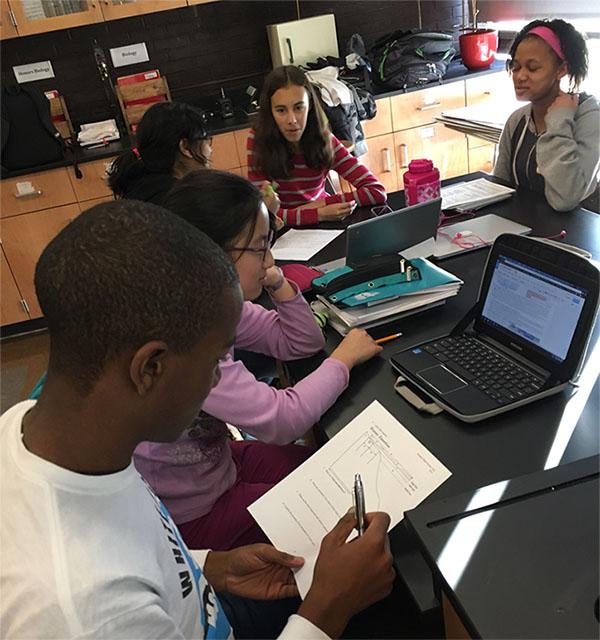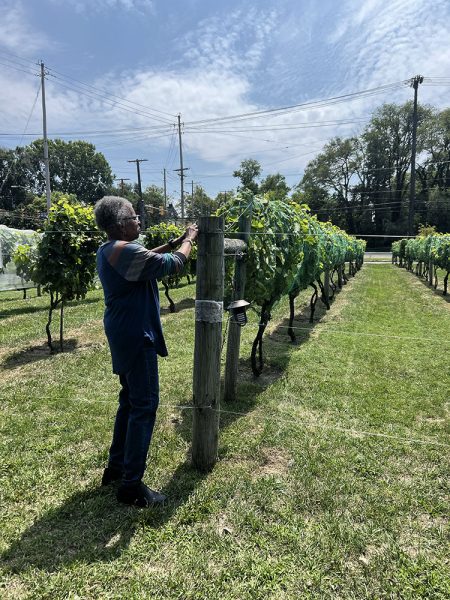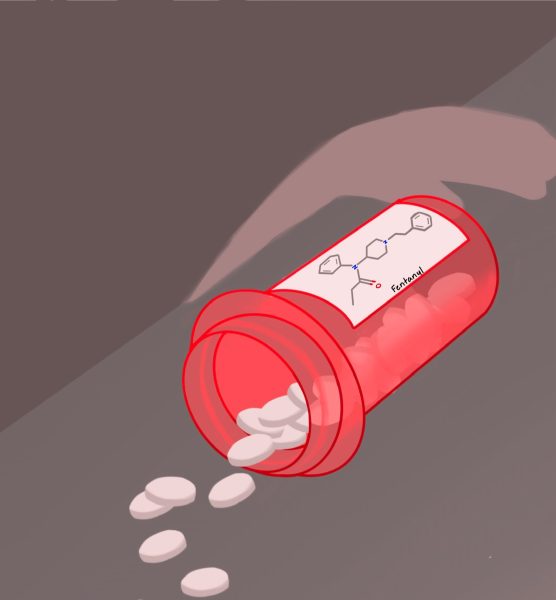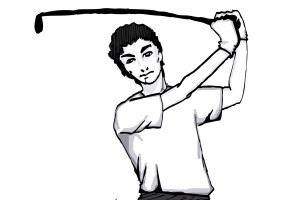Experience Pays Off For Science Olympiad
On a Friday after school in January, room 705 is crowded and bustling with activity. A line of multi-colored backpacks are stacked haphazardly against the back counter. A drill buzzes at one end of the room as two students work on a heavy wooden contraption.
Nearby, another group fiddles with plastic gears and rods, while someone carefully cuts thin beams of delicate wood for another project. On the far side of the room, half a dozen people are talking loudly, huddled around a laptop, its owner rapidly typing away. Occasionally, someone stands to stretch or get a snack from the center table. Every inch of counter space is covered.
This is where the Beachwood Science Olympiad team practices.
It does not look like a place where legends are born.
But the BHS Science Olympiad team, consisting of one drill, a stack of binders, three equipment tubs and about two dozen science enthusiasts, placed fourth, surpassing expectations at the Kenston Science Olympiad Invitational on Saturday, Jan. 16.
“We have a second place trophy in the Kenston Invitational from 2012, an eighth place trophy from Mentor from 2011, another second place trophy from Chagrin Valley [from] 2000 and last year, our entire team placed tenth at states,” Co-Captain Sri Vidya Uppalapati said.
“We don’t exactly have a whole bookshelf of awards, so I never expected to place so high this year,” she said. “It was when we were in the middle of the awards—when I saw the placements and scores of the teams who were awarded before us—It was then that I realized that we definitely got something more than last year.”
“I knew, after placing eighth at Westlake, our team would be competitive at Kenston,” Co-Captain Yuke Zheng said, “But I had no idea we would beat out the teams that have traditionally placed higher than us.”
The BHS team won numerous medals in individual events that contributed to the overall placement: freshman Jing-Jing Shen; sophomores Gregory Glova and Daniel Mishins; juniors Jennifer Yen, Mukul Govande, Yuke Zheng, Andrew Lubinger and Cameron Haynesworth; and seniors Jessica Tall, Hannah Leland, Sri Vidya Uppalapati, Lynn Jiao and Bagatur Askaryan.
One the events Beachwood placed in was Disease Detectives, which challenges competitors to identify different types of diseases and develop a plan to contain them. In the Kenston Invitational, Jennifer Yen and Hannah Leland placed fifth.
“Our strategy is that I take care of describing the disease and coming up with prevention measures to control the disease,” Leland said. “Then Jennifer takes care of the statistics, and at the end we do everything else together.”
“We weren’t really expecting to win,” Leland said. “We thought we did well, but [in the past] we haven’t done well enough to win anything.”
According to Leland, Science Olympiad involves a lot of similar events in which competitors are given a test of their knowledge and skills to complete in a limited time frame.
“I definitely feel we improved as a team for the Kenston Invitational,” Zheng said. “Our total team score dropped from 413 points at the Westlake Invitational to 306 points at Kenston, which is an incredible improvement. I felt like all our hard work in the pre-season paid off at this invitational. I’m so proud of how far we’ve come.”
The scores refer to the sum of the team’s placement number in all of their twenty-three events. The lower the score, the higher the team ranks.
“Part of [our improvement] has to do with [the fact that many of us have had] the benefit of being here last year when we started building our resources,” Uppalapati said. “[In the past,] when Science Olympiad seniors have graduated, they haven’t left a lot of things behind, but we have to build a lot of resources for [younger students]. We really moved up from last year by actively using our experiences. We have a lot more people who are dedicated this year.”
According to Uppalapati, the Science Olympiad team has an online dropbox database of useful cheat sheets containing important information pertaining to certain events. These cheat sheets, including formulas, facts and statistics, can be used during competition, though most events limit the cheat sheet length to a certain number of pages. Along with cheat sheets, the dropbox also contains practice tests, answer keys and other resources.
BHS Science Olympiad teams have dreamed for years of advancing to nationals. Beachwood has qualified for the state tournament numerous times in the past, but only the top two qualifiers at states are allowed to compete at the national level.
“[At Kenston, we] had a record number of individual event placings–from first to eighth place–in our school’s history,” Zheng said. “So if we keep improving at the same rate by pushing our weaker events to place higher, our team will be incredibly competitive at the regional and state competitions.”
“We tell ourselves every year that this is the year when we will finally make it to nationals,” sophomore Jakin Wu said. “…and with this year’s momentum, we might finally be able to reach it.”
Goals for the future are now commonly topics of conversation during the BHS team’s practices.
“Our goal is to be in the top ten at states—”
“No, top five—”
“Top two, guys, we need to make it to nationals.”
“You think we can beat schools like Mason? And Centerville? And Solon?”
“Okay, fine, top five.”
For Uppalapati, competing against other local teams is not the point.
“My personal goal is to go even further and fully harness our potential so we can make it to nationals eventually, even if it’s not this year,” she said.
Science Olympiad team members are also heavily focused on recruitment.
“We seem to have enough people as of right now,” Wu said. “This year has generally seemed a lot more organized. Everyone knows what they’re doing. But we’re still looking for more people because a few more hands never hurt anyone.”
“I would encourage more people to come out and try Science Olympiad,” Uppalapati said. “We’re not horribly short on staff, but I think it’s a wonderful place for people to explore.”
“We have events for everything, some of them aren’t even technically science,” she added. “It’s the process and the method that matters. I think people can just explore what they want to learn more about, and this is one place where you will not receive any negativity for just wanting to try something. That is essentially what I love about this club.”
“We’re a really vibrant team,” Zheng agreed. “If you come and stay for long enough, we’re like a family. Oh, and everyone should wish us luck.”
The Science Olympiad team competed at Westlake Invitational on Jan. 9th, Kenston Invitational on Jan. 16th, and Solon Invitational on Jan. 30th. They will be competing on Feb. 13th at Mentor, followed by the regional competition at Case Western Reserve on Feb. 20th. If the team qualifies, they will be moving on to the state competition at Ohio State University on April 9th.
Back in room 705, the two guys working in the corner sigh simultaneously. One mutters something about how there isn’t enough torque and tosses aside the drill, which lands with a loud clatter. His friend runs a hand through his hair in frustration.
After a while, he picks up another nai.
“Alright, let’s try this again,” he says.
The drill resumes its mechanical whirring.
It may not look like a place where legends are born, but still… something.
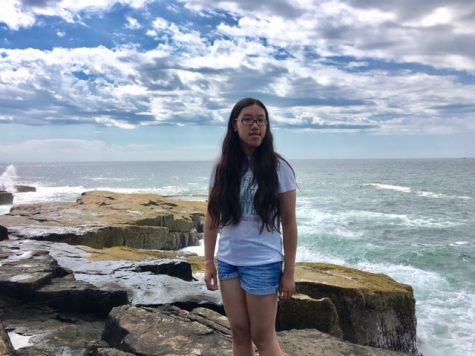
Jinle Zhu has been writing for The Beachcomber since her freshman year (2014). She has been the features editor and layout editor. She likes Photoshop...



